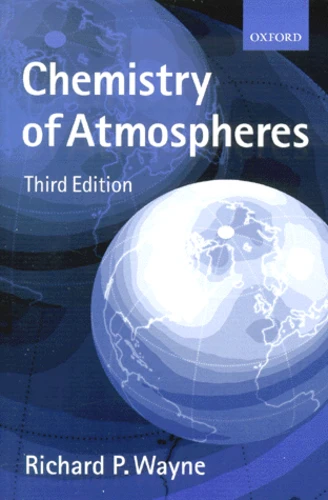Chemistry of atmospheres. An introduction to the chemistry of the atmospheres of Earth, The Planets, and their Satellites, Third edition
Par :Formats :
- Paiement en ligne :
- Livraison à domicile ou en point Mondial Relay indisponible
- Retrait Click and Collect en magasin gratuit
- Réservation en ligne avec paiement en magasin :
- Indisponible pour réserver et payer en magasin
- Nombre de pages775
- PrésentationBroché
- Poids1.13 kg
- Dimensions15,5 cm × 23,5 cm × 4,0 cm
- ISBN0-19-850375-X
- EAN9780198503750
- Date de parution21/02/2000
- ÉditeurOxford University Press
Résumé
This book explains the chemistry that occurs in the atmospheres of Earth, the planets, and some satellites. Although written from the perspective of physical chemistry, it makes unusually strong links to the underlying physics, geology, and, on Earth, biology that determine the chemical composition of an atmosphere and its behavior. In a clear, readable style, this important book looks at the insights and interpretations afforded by the research, and places in context the exciting, dramatic, and sometimes disturbing findings. Like its highly successful predecessor, this new edition lays down the principles of atmospheric chemistry and provides the necessary background for more detailed study. The text has been thoroughly revised and expanded throughout to take into account recent advances in atmospheric science that include a host of new atmospheric measurements, extended laboratory experiments, ever more sophisticated models, and ingenious interpretations of the phenomena. The impacts of man's activities on, for example, the depletion of stratospheric ozone or the pollution of the urban environment are given due weight. One chapter is devoted to the wealth of data obtained largely from space missions about the atmospheres of other bodies in the solar system. The origin and evolution of these atmospheres as well as our own are explored, and the relation between the atmosphere and climate in the past and in the future is considered in relation to Earth. A multidisciplinary approach is taken throughout in order to highlight the interplay between the atmosphere of a planet and other parts of the environment. This feature makes the book full of interest for chemists, physicists, biologists, and other scientists alike, and accessible to all of them. Readers will find the book an excellent introduction to an exciting topic, and a fascinating source of information about a part of science that is proving to be of key importance.
This book explains the chemistry that occurs in the atmospheres of Earth, the planets, and some satellites. Although written from the perspective of physical chemistry, it makes unusually strong links to the underlying physics, geology, and, on Earth, biology that determine the chemical composition of an atmosphere and its behavior. In a clear, readable style, this important book looks at the insights and interpretations afforded by the research, and places in context the exciting, dramatic, and sometimes disturbing findings. Like its highly successful predecessor, this new edition lays down the principles of atmospheric chemistry and provides the necessary background for more detailed study. The text has been thoroughly revised and expanded throughout to take into account recent advances in atmospheric science that include a host of new atmospheric measurements, extended laboratory experiments, ever more sophisticated models, and ingenious interpretations of the phenomena. The impacts of man's activities on, for example, the depletion of stratospheric ozone or the pollution of the urban environment are given due weight. One chapter is devoted to the wealth of data obtained largely from space missions about the atmospheres of other bodies in the solar system. The origin and evolution of these atmospheres as well as our own are explored, and the relation between the atmosphere and climate in the past and in the future is considered in relation to Earth. A multidisciplinary approach is taken throughout in order to highlight the interplay between the atmosphere of a planet and other parts of the environment. This feature makes the book full of interest for chemists, physicists, biologists, and other scientists alike, and accessible to all of them. Readers will find the book an excellent introduction to an exciting topic, and a fascinating source of information about a part of science that is proving to be of key importance.

